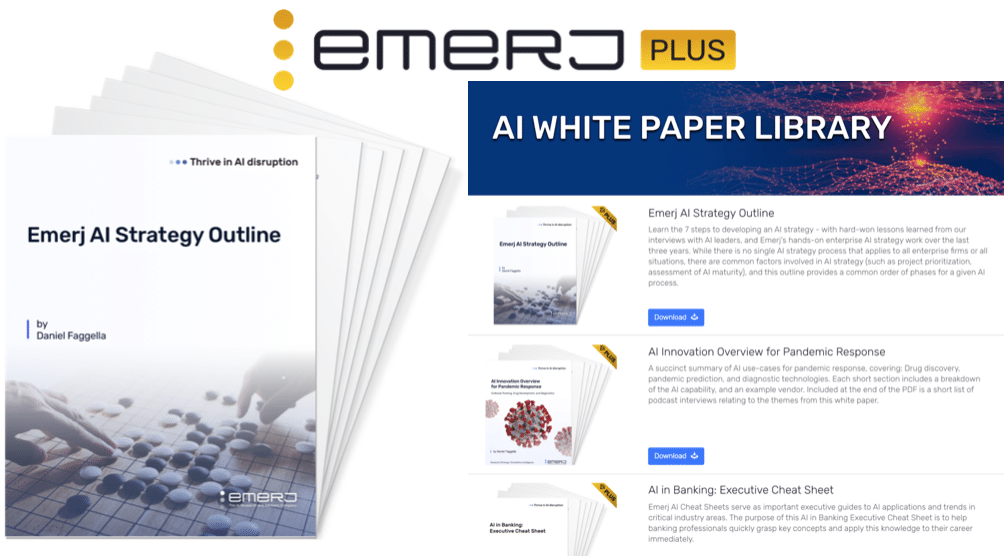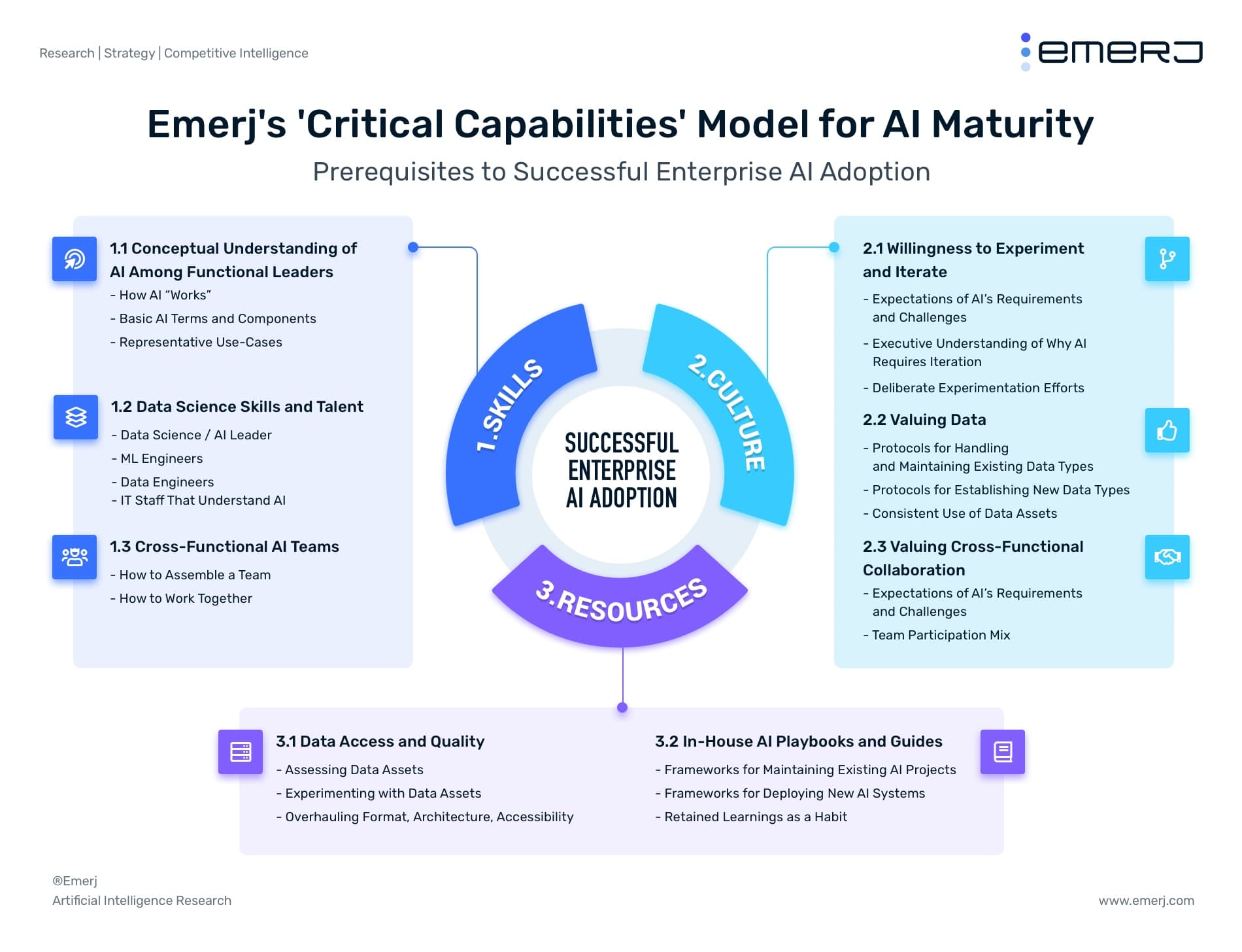Many books could be written on the subject of AI strategy, and we’ve seen that “strategy” means something different from one enterprise to the next. This article is a brief overview of the common steps in creating an AI strategy – in roughly the order that the steps are usually executed.
This article draws directly from a short six-page guide called the Emerj AI Strategy Primer, one of many resources in our Emerj Plus AI White Paper Library.
We have and will continue to write articles and reports about the topics below – but this brief overview should serve as a primer for anyone considering – or currently in the middle of – creating an AI strategy. Consider the steps below and think about which steps might be most important for your organization – or which steps might have been skipped over in the creation of an existing strategy. We’ll begin with step 1:
1. Develop Executive AI Fluency
Any AI strategy session must begin with a fundamental understanding of:
- What AI can do
- A reasonable range of AI use-cases (often specific to the industry of the client), and
- The AI Transformation Vision of the company
When enterprise leaders are mostly ignorant about what AI can do and how it fits into their company, they have no grounding for picking viable near-term projects, never mind for developing long-term strategic plans. For this reason, some level of workshopping, presentations, and executive education is a necessary part of any AI strategy project.

2. Clarify Current Priorities and Vision
Clarifying priorities must take into account:
- The firm’s existing business strategy and digital transformation vision, and
- Near and long-term company priorities
AI strategies should ideally both (a) directly target near-term results that are of value for the firm, and (b) build (in AI maturity, and in actual capability) long-term strategic objectives (what we refer to as “Strategic Anchors”).
3. Develop an AI Transformation Vision
While a full AI Transformation Vision can be rather complex, firms who want a basic grounding of the idea should ensure that their final version of the vision (typically a written report with some kind of graphical or visual representation) includes:
- The role AI is likely to play in sustained competitive advantage in the market
- The data dominance approach that the company might employ in order to take advantage of proprietary data streams and sources
- The specific areas where AI is likely to deliver value in the near and mid-term, including customer experience and core business operations
While it’s possible for this vision to be informed and altered by the discovery of individual, near-term AI projects and initiatives, it’s much more likely that the range of nea-term AI projects (developed later in the strategy process) will be made more exhaustive and useful with an AI Transformation Vision as a beginning reference point.
4. [Discovery] Match AI Opportunities to Business Problems
This ideation phase should involve collecting a wide variety of AI projects. Rather than beginning with a single jumping-off point, facilitators should consider generating AI initiative ideas from a variety of perspectives, including:
- Starting with array of AI use-cases from adjacent industries, and extrapolating how they might be applied to our own firm
- Starting with a list of near-term challenges or near-term goals
- Etc…
Discovery is most productive when it can best make use of all the members of a cross-functional AI team – which often includes data scientists, SMEs, leadership, and potentially a representative from IT.
 5. Assess AI Maturity
5. Assess AI Maturity
Almost all AI strategy projects involve a strong grounding in where the company stands today in terms of AI maturity. AI maturity is sometimes referred to as AI readiness.
We refer to it as the prerequisites for successful AI adoption, and we use a model called Critical Capabilities to highlight the areas of AI maturity that are generally most relevant for the C-suite, and for non-technical, functional business leaders.
6. Rank and Score AI Opportunities
While an initial brainstormed list of AI use-cases might be stratified by time horizon (near-term, long-term), or by department or business area – deciding on an initial cluster of viable AI projects will involve ranking and scoring AI applications.
Some of these scores might be particular to particular companies – but almost all project ranking will take into account:
- Estimated cost of a project or initiative
- Estimated time required to test a pilot project or validate the idea
- Potential strategic upside
- Potential measurable upside (revenue improvement, cost savings, etc)
Time and cost estimates are remarkably challenging with AI projects for a variety of reasons, so an AI strategy team should be looking at orders of magnitude differences.
It’s important to ensure that project prioritization includes input from in-house data scientists who can help to assess the technical validity of projects, and their relative complexity.
7. [Roadmap] Final Shortlist of Opportunities and Benchmarks
Firms who have a sense of their present, their vision, and the range of near-term projects that might help them achieve their long-term goals can move on to the next phase of the AI strategy process: the deliverable.
During this phase, a firm defines a portfolio of viable initial potential projects (often including rough or suggested timelines to start these initiatives), along with a concretized version of the AI Transformation Vision.
The document that results from an AI strategy initiative might serve many purposes, but above all else it should get business and technical leadership on the same page about the roadmap of AI projects – and the destinations that the company hopes to arrive at through its initial AI efforts.





















